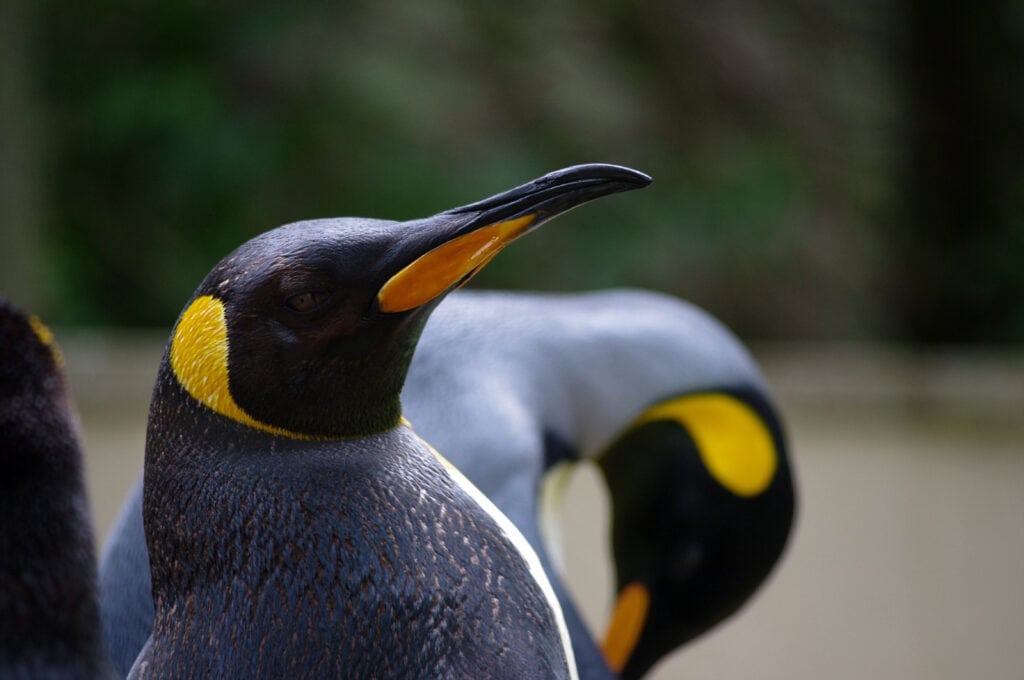King penguins largely resemble their larger and more ubiquitous relatives, emperor penguins. They are the second-largest of the world’s penguin species and are often found in massive colonies of birds, as large as 200,000 strong. It is easy to imagine, then, that these majestic diving birds would be a treasured inhabitant of any zoo. Jurong Bird Park in Singapore, which is operated by Mandai Wildlife Reserve and is currently relocating and rebranding as larger and more comprehensive park by the name of “Bird Paradise,” has proven their devotion to three of their beloved king penguins this year with a ground-breaking new surgery.
Related Article: In Parts of the American South, the Arrival of the Purple Martin Marks the Start of Spring
The birds in question were all over the age of twenty, making them seniors amongst penguins. The surgery was first conceived of when zookeepers and handlers noticed that the three king penguins’ eyes had grown cloudy. Cataracts are a common side effect of aging in many animals, including many penguin species. King penguins can live as long as forty years in captivity, but the vision issues brought on by these cataracts were impacting the birds’ activity level, which could impact their lifespan as well. The cataract surgery was considered as a way to give these three king penguins, as well as three of the zoo’s Humboldt penguins, a new lease on life.
Each of the penguins received a custom-made intra-ocular lens implant; essentially, an artificial replacement lens designed especially for the individual penguin utilizing precise eye measurements to ensure that the lens was a good fit.
The surgery is unprecedented and represents a step forward for avian veterinary medicine and veterinarian ophthalmology. Due to the third eyelids which penguins have in order to protect their eyes underwater, the procedure was delicate and required the utmost precision.
Post-surgery, the penguins underwent a recovery period during which they had to be treated with eye drops and were not allowed to enter the water. Following this period of healing, which was a success, they were able to return to their usual activities. According to zookeepers, the penguins who underwent the surgery demonstrated increased activity post-surgery, indicating that the surgery was successful in improving their vision and quality of life.
This is not the first time that Jurong Bird Park tried something ground-breaking in order to improve the life of one of their birds. In 2018, a great pied hornbill named Jary developed a cancerous gash in its casque. Jurong Bird Park recognized the threat that this form of cancer posed and sprang into action. Jary’s casque, and the extensively cancerous tissue beneath it, was removed and replaced with a custom-made 3D printed prosthetic which allowed Jary to defeat this aggressive form of cancer.
As new technologies develop, it is exciting to see all of the applications that they can have with regards to treating injured or sick birds, improving quality of life, or general conservation practices.
Popular Article: Portland Audubon Becomes Most Recent Audubon Group to Drop Audubon Name

